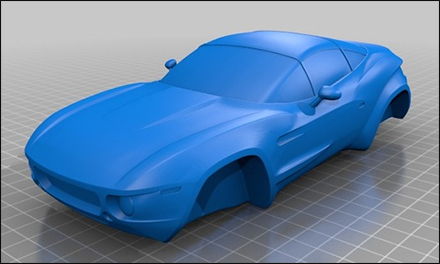A Do-It-Yourself (DIY) automobile is the fantasy of millions, yet one heretofore unachieved. That might be about to change as big-ticket and startup car companies increasingly turn to additive manufacturing. Could 3D printing be the catalyst that DIY carmakers have been waiting for?
History’s littered with failed DIY cars, some by charlatans and others by wannabe-visionaries. They’ve come in all sorts of shapes, sizes, and styles, targeting every demographic of every segment of society. (Just lookup up the 1910s’ “Lad’s Car,” a DIY automobile that targeted early adolescents.) There is one thing all these efforts share: Utter and complete failure.
This “Second Industrial Revolution,” as enthusiasts have proclaimed it, has reinvigorated the imaginations of carmakers, established and aspiring alike. Big-dollar manufacturers have taken an inviting attitude, with Porsche and Honda both offering Computer-Aided Design (CAD) blueprints of their vehicles for 3D-printing. Ford engineers are using MakerBot 3D printers to create vehicle parts for pre-production testing. Aston-Martin printed scale-models of its vehicles for use in Skyfall.
But it’s on the other end of the spectrum that one sees more creative forays being made in the field.

Arizona’s fledgling Local Motors, founded in 2007, announced that it would 3D-print an electric variant of its “Rally Fighter,” making it available by fall of this year. The Association for Manufacturing Technology (AMT) contracted Local Motors to develop the vehicle, which it hopes will showcase the maturing potential of additive production.

By 3dilla (Urbee 3D printed car | 3d Print Show | 3dilla.com)
[CC-BY-2.0], via Flickr – Photo Sharing!
Canada’s Jim Kor is leading another 3DP auto effort. Kor, an engineer, has been on a crusade to 3D-print an ultra-light, ultra-compact vehicle called the “Urbee.” This ovular, three-wheeled car has its interior and exterior composed of 3DP material. Powered by bio-fuel, Kor aims to have the Urbee run across the United States on just 10 gal. of fuel.
In a true DIY-fashion, Ivan Sentch of New Zealand garnered international press when he started work on a 3D-printed replica of an Aston-Martin DB4, a vintage touring coupe. Sentch is using a Nissan as the basis for the replica, but he is printing interior components and exterior body-work for assembly in his humble little garage.
The next stage in automotive development is approaching. MakeForge’s Mark 1 appears to be the first 3D printer to produce carbon-fiber. The relatively small, industrial-grade machine specializes in lightweight, high-strength composites as seen on exotic and premium automobiles, such as the $239,000 McLaren MP4-12C and $136,000 BMW i8.
Composites appear to be an inevitable direction in automotive design: Rising fuel-efficiency standards have pushed automakers to build leaner and less consumptive vehicles. Carbon fiber, a material made of melded threads, is becoming common on automotive body-panels. High cost and labor-intensive production are the material’s setbacks, but the notion of an additive, low-labor alternative may be a breakthrough…
Composites appear to be an inevitable direction in automotive design: Rising fuel-efficiency standards have pushed automakers to build leaner and less consumptive vehicles. Carbon fiber, a material made of melded threads, is becoming common on automotive body-panels. High cost and labor-intensive production are the material’s setbacks, but the notion of an additive, low-labor alternative may be a breakthrough…
… or, at least, the start of one.



